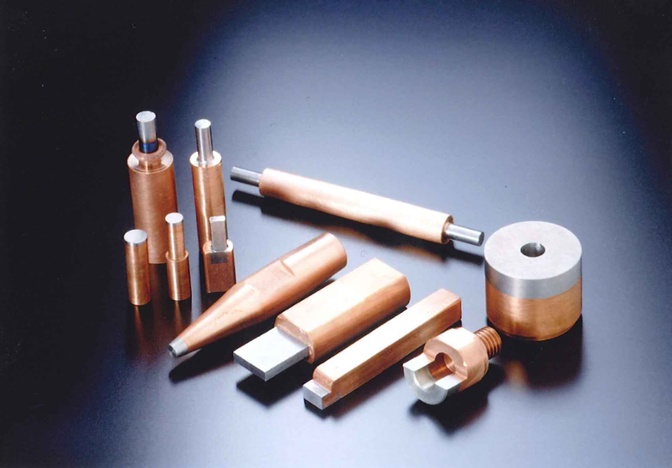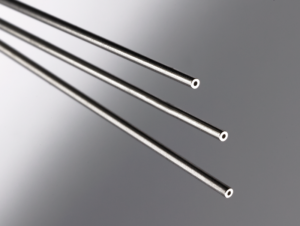Where Precision Meets the Road
Today’s automobiles are incredibly complex, and even a single system within an engine can have almost mind-boggling intricacy. Take, for example, fuel injection systems. Long ago gasoline-powered automobiles have gone the way of diesel trucks in using fuel injection to deliver a fine mist of fuel either directly before the engine’s intake valves or more recently, with direct injection systems, into the combustion chambers themselves. By atomizing fuel into an air-fuel mist that allows the fuel to burn more easily, these fuel injection systems increase fuel efficiency and improve engine response times.
What are some parts requirements for fuel injection systems?
Fuel injection systems are intricately designed with many different parts made from a range of materials, including plastics, ceramics, and metals. All of these parts need to withstand different environmental circumstances and survive harsh operating conditions — whether we’re talking sub-freezing temperatures outdoors or boiling hot temperatures under the hood. In addition, it is vital that the components in fuel injection systems also remain properly aligned under both the heat of the engine and the temperatures (hot or cold) of the surrounding environment.
Additionally, the components of fuel injection systems must be made from materials that can survive the effects of petroleum products, which are solvents, and the chemicals commonly added to them. As we have seen in the ethanol debate, there are concerns that some blended petroleum products can have an impact on the service life of some fuel system components, with performance degrading over time due to corrosive effects.
To perform effectively in reducing tailpipe emissions and increasing fuel economy, fuel injection systems require components that are very precise and engineered to tight tolerances for characteristics such as flatness, parallelism, and perpendicularity.
Why are metal parts used in fuel injection systems?
It comes as no big surprise that, with few exceptions, fuel injections systems use a lot of metal components, as well as metal parts as tooling in the manufacture of many of those components. All of those metal components — in various sizes and shapes such as rings, spacers, and tubes, and using different materials ranging from aluminum and low carbon steels for light duty components, to hardened steels and specialty non-ferrous metals for critical components — must be expertly made and provided to manufacturers of fuel injections systems. And that is where Metal Cutting Corporation comes into the picture.
Metal Cutting makes metal parts designed to withstand temperature fluctuations — both the tremendous heat of the engine and the hot/cold of the surrounding environment — and to prevent warping and maintain the precise alignment required in fuel injections systems, even under extreme conditions. We have produced metal components with 5 micron total dimensional tolerance, to enable effective sealing and prevent leaking that would degrade performance, produce harmful emissions, and reduce fuel economy — not to mention, trigger costly warranty repairs and reputation-damaging, bad customer experiences.
Why is precision tooling vital in fuel injection systems?
For the tooling of metal parts in the manufacture of fuel injections systems, Metal Cutting makes the EDM hole-popping electrode that makes the hole in the fuel injectors themselves.
While the fuel injection systems in gasoline and diesel engines use somewhat different technologies — in diesel engines, the fuel must be injected at an exact point in the engine cycle, but that level of precision is not needed in a gasoline engine — these systems all require fuel to be injected through a hole in the fuel injector (or a direct injection system) in order to atomize the liquid fuel and create the necessary fuel-air mixture. In both instances, and especially with diesel engines, the fuel is injected at very high pressure.
In most fuel injections systems, there are usually multiple holes, and they all need to be as identical as possible to guarantee that the fuel is fully atomized and there is no inconsistency that could cause damage. For example, if one hole is larger than the others, the fuel going through that hole will act as a blowtorch, literally cutting through a cylinder wall or, in the case of a diesel engine, through a cylinder lining — resulting in expensive engine repairs and costly downtime.
Defining “identical” has become more precise over time. For instance, where fuel injector holes previously could have a 0.001” difference in diameter, today that is completely unacceptable. That is why Metal Cutting produces tooling that maintains diameter tolerance to less than 20 millionths of an inch or half a micron total diameter tolerance range.
With such a complex technology, these are just a few of the factors to consider when manufacturing or tooling metal parts for use in fuel injections systems. As a precision metal fabricating company that serves the automotive industry, Metal Cutting is an expert in very tight tolerance cutting, grinding, lapping, and polishing of all metals. We also provide secondary operations such as bending, angle cutting, and pointing and slotting of small diameter tubes, wires, and rods. In addition, tungsten and molybdenum products, such as wire, ribbon and rod, are available.
For tips on how to choose the right vendor for your metal parts needs, please download our free guide, 7 Secrets to Choosing a New Contract Partner: Technical Guide to Outsourcing Your Precision Metal Fabrication.






